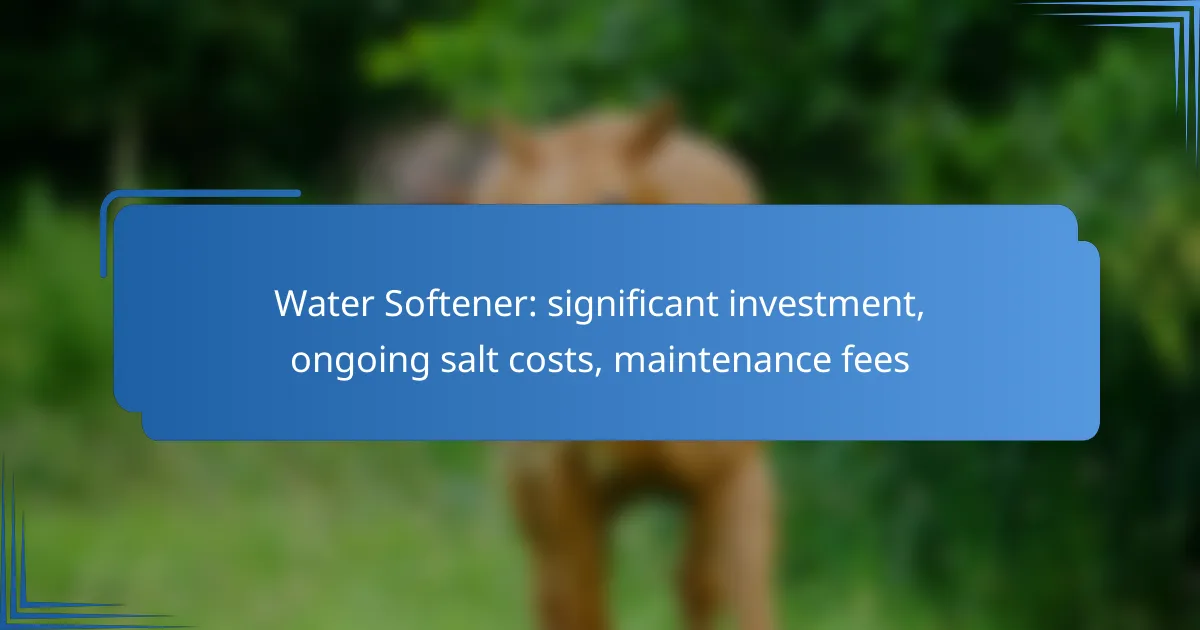Investing in a water softener can greatly improve your home’s water quality, but it comes with significant initial costs and ongoing expenses. Beyond the purchase and installation, homeowners should be aware of recurring salt costs and maintenance fees that can add up over time. Understanding these financial commitments is essential for making an informed decision about whether a water softener is the right choice for your household.
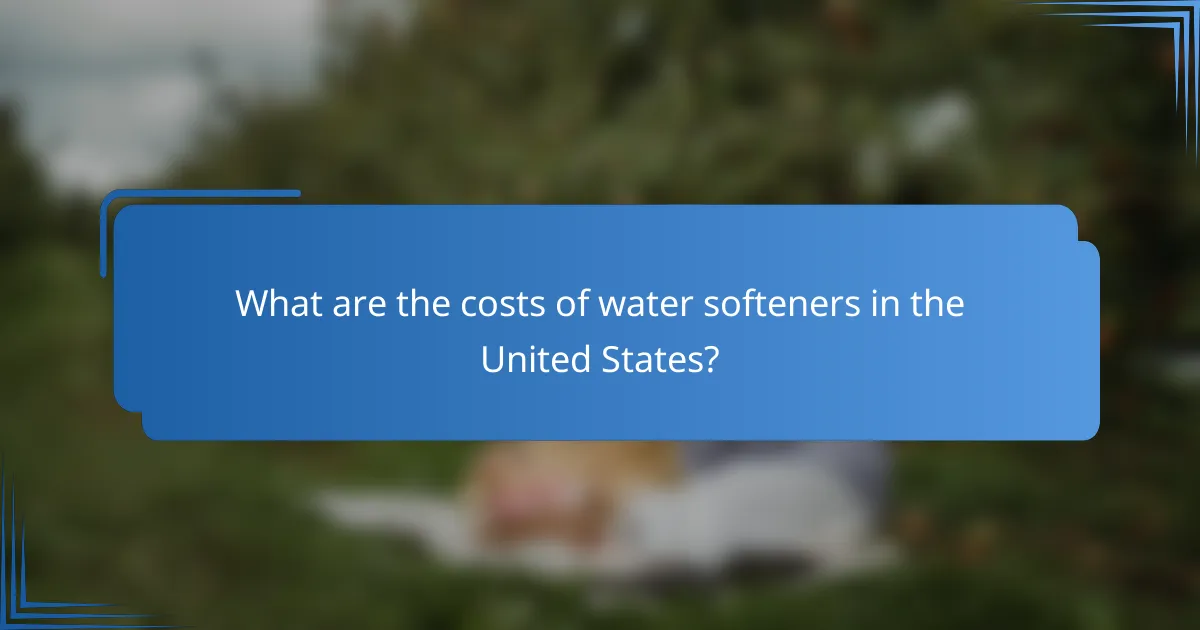
What are the costs of water softeners in the United States?
The costs of water softeners in the United States can vary significantly based on initial purchase, installation, ongoing maintenance, and operational expenses. Understanding these costs is crucial for homeowners considering this investment to improve water quality.
Initial purchase price
The initial purchase price of a water softener typically ranges from a few hundred to several thousand dollars, depending on the system’s capacity and technology. Basic ion-exchange systems are generally less expensive, while advanced models with features like digital controls or reverse osmosis can be pricier.
When selecting a water softener, consider the size of your household and your water hardness level, as these factors influence the system’s efficiency and long-term value.
Installation fees
Installation fees for water softeners can range from $150 to $500, depending on the complexity of the installation and local labor rates. Some homeowners may opt for DIY installation to save costs, but professional installation is recommended for optimal performance.
Ensure that the installation complies with local plumbing codes to avoid future issues, and factor in any additional costs for plumbing modifications if necessary.
Ongoing salt costs
Ongoing salt costs for water softeners can add up, typically ranging from $5 to $20 per month, depending on water usage and the system’s efficiency. The type of salt used can also affect costs, with options including rock salt, solar salt, and evaporated salt.
Regularly monitoring salt levels and replenishing them as needed can help maintain the system’s effectiveness and prolong its lifespan.
Maintenance fees
Maintenance fees for water softeners generally include periodic servicing and replacement parts, which can cost between $50 and $150 annually. Regular maintenance is essential to ensure the system operates efficiently and to address any potential issues early.
Homeowners should also consider the cost of replacing the resin beads every 5 to 10 years, which can add to the overall maintenance expenses.
Long-term savings
Investing in a water softener can lead to long-term savings by reducing the wear and tear on plumbing and appliances, which can lower repair and replacement costs. Softened water can also improve the efficiency of water heaters and dishwashers, potentially reducing energy bills.
In addition, homeowners may notice savings on soap and detergent usage, as softened water enhances cleaning effectiveness, leading to less product consumption over time.
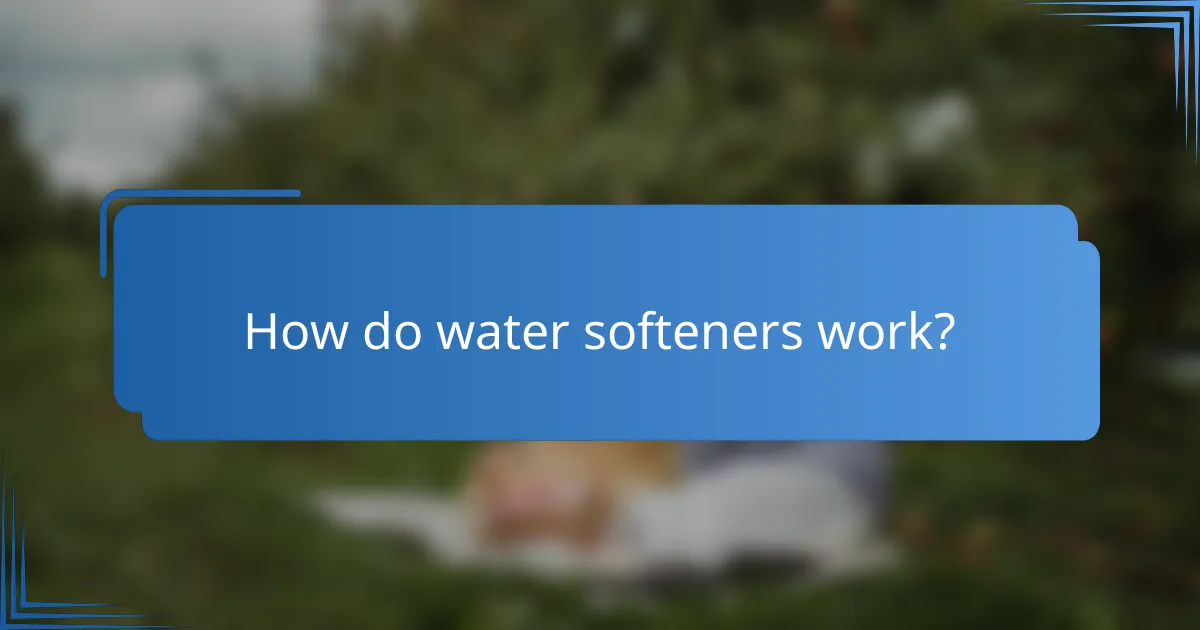
How do water softeners work?
Water softeners work by removing minerals like calcium and magnesium that cause hard water. They replace these minerals with sodium ions through a process called ion exchange, resulting in softer water that is easier on plumbing and appliances.
Ion exchange process
The ion exchange process is the core mechanism behind water softeners. In this process, hard water passes through a resin bed filled with sodium ions. As the hard water flows through, calcium and magnesium ions are attracted to the resin and exchanged for sodium ions, effectively softening the water.
This process requires periodic regeneration, where a salt solution is used to recharge the resin with sodium ions. The frequency of regeneration can depend on water hardness and usage, typically occurring every few days to weeks.
Types of water softeners
There are several types of water softeners available, each with distinct features. The most common types include salt-based, salt-free, and dual-tank systems. Salt-based softeners are the most effective for hard water but require ongoing salt purchases and maintenance.
Salt-free systems use alternative methods to reduce scale buildup but may not be as effective in very hard water conditions. Dual-tank systems allow for continuous softening by using two tanks, ensuring that one is always available for use while the other regenerates.
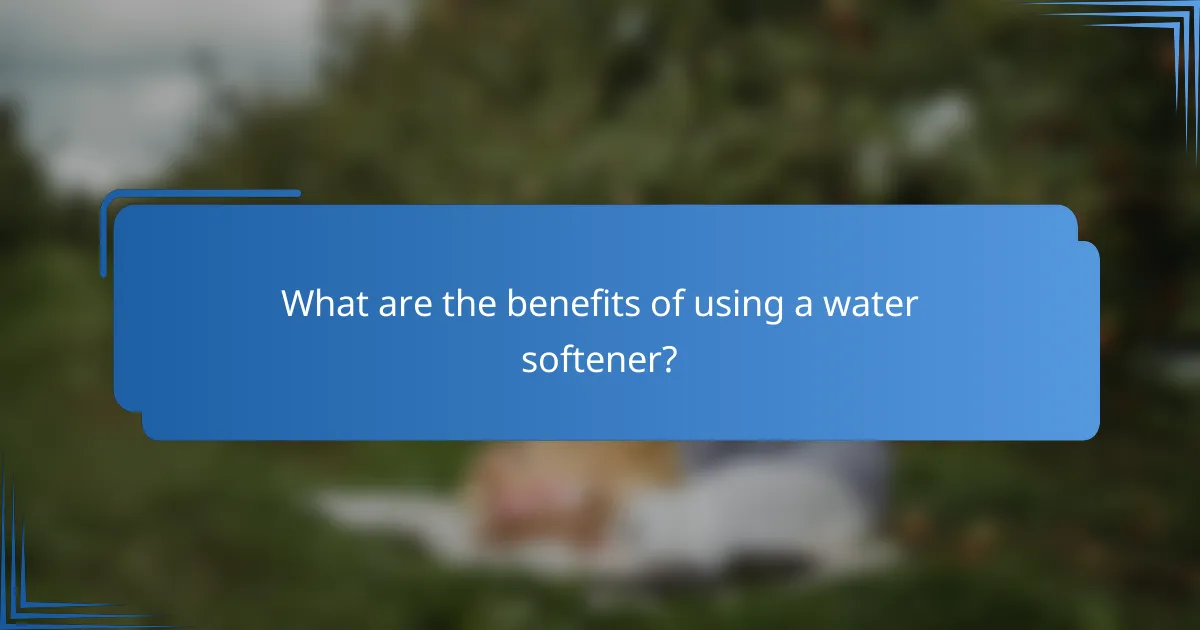
What are the benefits of using a water softener?
Using a water softener can significantly enhance the quality of your water, leading to various benefits such as improved appliance lifespan, better skin and hair health, and enhanced cleaning efficiency. These advantages stem from the softening process, which reduces mineral content in hard water, primarily calcium and magnesium.
Improved appliance lifespan
Water softeners help extend the lifespan of household appliances by preventing scale buildup. Appliances like dishwashers, water heaters, and washing machines operate more efficiently with softened water, reducing wear and tear over time.
For example, a water heater can last several years longer when using soft water, as it avoids the corrosive effects of mineral deposits. Regular maintenance costs associated with repairs can also decrease, providing long-term savings.
Better skin and hair health
Softened water can lead to healthier skin and hair by reducing dryness and irritation. Hard water often contains minerals that can strip natural oils, leading to issues like eczema or brittle hair.
Many users report softer skin and shinier hair after switching to a water softener. This improvement can be particularly beneficial for individuals with sensitive skin or specific skin conditions.
Enhanced cleaning efficiency
Water softeners improve cleaning efficiency by allowing soaps and detergents to lather better, which means less product is needed for effective cleaning. This can lead to lower costs for cleaning supplies over time.
Additionally, softened water reduces the chances of soap scum and mineral stains on dishes, glassware, and laundry. This means less scrubbing and more time saved on cleaning tasks, making household chores easier and more efficient.

What factors should you consider when choosing a water softener?
When selecting a water softener, consider water hardness, household size, and system capacity. These factors influence both the initial investment and ongoing costs, including salt and maintenance fees.
Water hardness level
Understanding your water hardness level is crucial when choosing a water softener. Hard water contains high levels of minerals like calcium and magnesium, which can affect your appliances and plumbing. You can typically test water hardness using a simple kit, with results usually measured in grains per gallon (gpg) or parts per million (ppm).
For most households, water hardness levels above 7 gpg are considered hard and may require a more robust softening system. If your water is exceptionally hard, you might need a system with higher capacity to effectively reduce mineral content.
Household size
Household size directly impacts the water softener you choose. Larger families typically use more water, which means they need a system that can handle higher volumes. A good rule of thumb is to estimate daily water usage, which averages around 80-100 gallons per person.
For example, a family of four may require a softener that can handle at least 320 gallons daily. This ensures that the system can effectively soften water without running out during peak usage times.
System capacity
System capacity refers to how much hardness the water softener can remove before needing regeneration. This is often measured in grains. A higher capacity system is essential for households with high water usage or very hard water.
When evaluating capacity, consider both the hardness level and the number of people in your home. Systems typically range from 30,000 to 80,000 grains, with larger systems suitable for bigger households or those with particularly hard water.
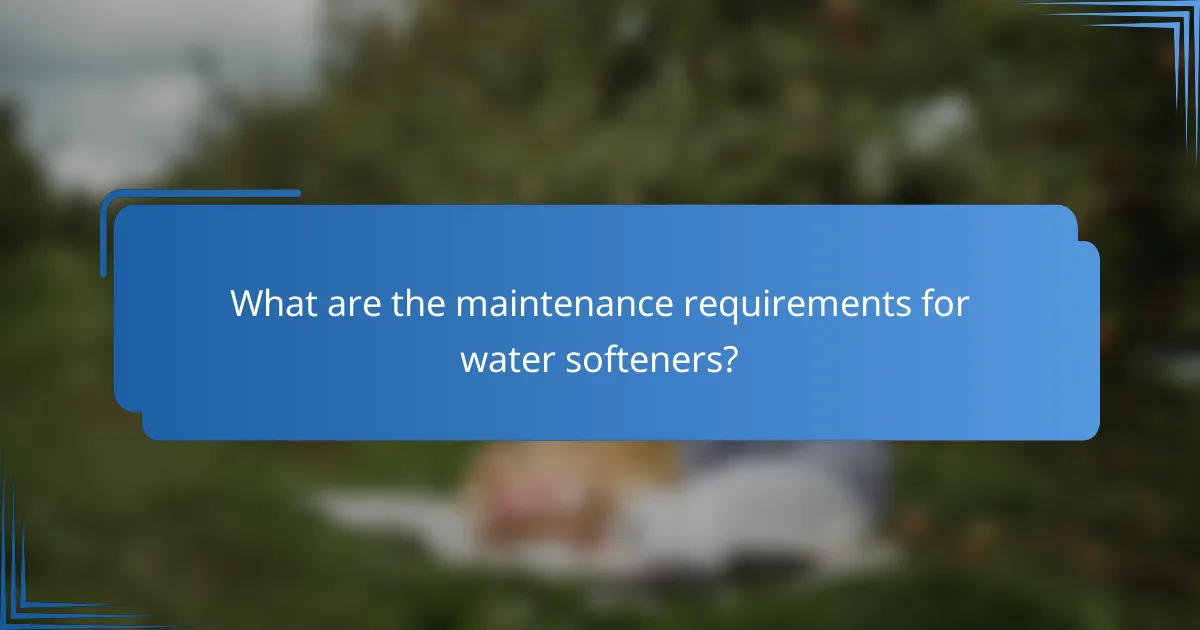
What are the maintenance requirements for water softeners?
Water softeners require regular maintenance to function effectively, primarily involving salt replenishment and occasional servicing. Understanding these requirements can help you manage costs and ensure optimal performance.
Regular salt replenishment
Regular salt replenishment is essential for maintaining the efficiency of water softeners. Most systems need salt added every few weeks to months, depending on water hardness and usage. Typically, households may use between 40 to 100 pounds of salt monthly.
When selecting salt, consider options like solar salt, rock salt, or evaporated salt, as they vary in purity and cost. Evaporated salt is generally the most efficient but can be more expensive than rock salt.
To avoid issues, check the salt level monthly and keep the brine tank filled to the recommended level. Neglecting this can lead to decreased performance and potential damage to the system.
